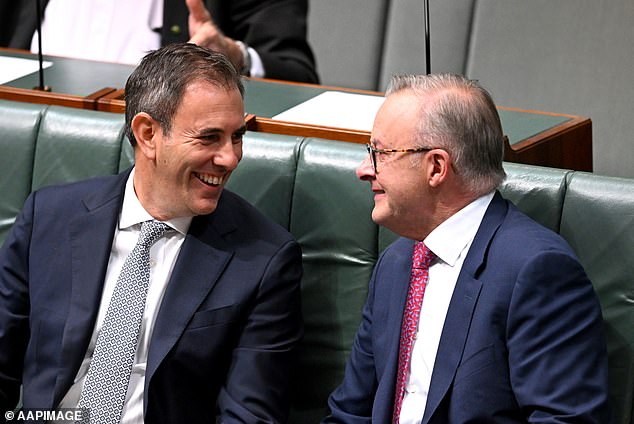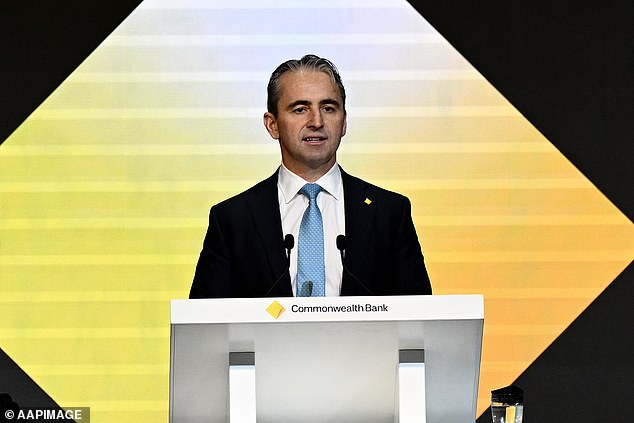The well-paid chief executive of the Commonwealth Bank has admitted record immigration is good for Australia’s biggest property lender.
Matt Comyn made the comment during an earnings presentation with analysts, a day before new figures showed unemployment hit a two-year high.
This has raised concerns from Treasurer Jim Chalmers about borrowers struggling to cope with rising interest rates in areas where house prices are higher.
“Without a doubt, strong population and migration growth is a major tailwind for the Australian economy and clearly the Commonwealth Bank is a beneficiary of further economic growth,” Comyn said on Wednesday.
A record 518,000 migrants, on net terms, moved to Australia in 2022-23.
This saw Commonwealth Bank make a record net cash profit of $10.164 million over the last financial year, while Comyn benefited from a pay package of $10.426 million.
The well-paid chief executive of the Commonwealth Bank has admitted record immigration is good for Australia’s biggest property lender. Matt Comyn made the comment during an earnings presentation with analysts.
CBA’s balance sheet was strong in the July-December 2023 period, with the bank posting a net cash profit of $5.019 billion in the first half of 2023-24.
This was despite the Reserve Bank of Australia in November raising interest rates for the 13th time in 18 months, taking the cash rate to a 12-year high of 4.35 per cent.
Higher interest rates are taking their toll on the economy and unemployment rose from 3.9 percent to a two-year high of 4.1 percent in January while just 500 new jobs were created, new figures showed from the Australian Bureau of Statistics released on Thursday.
Dr Chalmers blamed rising unemployment on rising interest rates.
“This is also the inevitable consequence of higher interest rates, persistent inflation and global economic uncertainty,” he said.
He was particularly concerned about New South Wales, where Sydney’s median house price of $1.395 million means borrowers are under more mortgage stress.
“Certainly those parts of Australia that are most exposed to mortgage pressures disproportionately feel the pain when interest rates rise,” Dr Chalmers said.
House prices in Australia have continued to rise, despite the cost of living crisis, as rising population growth made it harder for renters to find somewhere to live.

Treasurer Jim Chalmers blamed higher interest rates for higher unemployment (pictured left with Premier Anthony Albanese)
Record population growth has prevented Australia from falling into recession, but the economy has been in a per capita recession since early 2023, where output per worker is shrinking.
Increased immigration increases traffic congestion, which in turn affects productivity.
Falling production can worsen inflation because it means companies have to pass costs on to consumers to make profits, leading to higher prices for goods and services.
Reserve Bank Governor Michele Bullock admitted she did not know why Australian productivity was falling while it was recovering in the United States.
“They are the outliers: everyone else is like us,” he told the Senate economy committee on Thursday.
‘I don’t think we know specifically what the difference is.
“One thing I would note is that our growth in our workforce has been much stronger.”
The Commonwealth Bank is a member of the Business Council of Australia, which lobbies the government to maintain high levels of immigration.
While high population growth is good for alleviating skills shortages, housing demand deprives middle and middle income earners of being able to purchase property they can occupy in a capital city.

A record 518,000 net migrants moved to Australia in 2022-23
Comyn told analysts that the Commonwealth Bank would be happy to fund affordable housing projects.
“Also, try to attract or contribute more capital to the development of some social and affordable housing,” he said.
Australia’s permanent and long-term immigration intake, on a net basis, fell to 447,790 in 2023, but was still more than double the pre-pandemic level of 194,400 in 2019-20.

